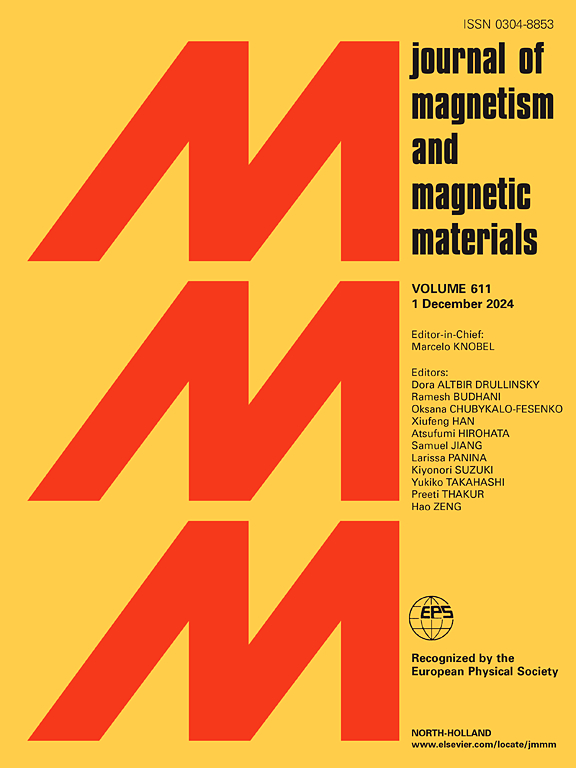Crystalline electric field and anomalous Hall effect in topological semimetal PrGaSi
IF 2.5
3区 材料科学
Q3 MATERIALS SCIENCE, MULTIDISCIPLINARY
引用次数: 0
Abstract
We report the physical properties of PrGaSi single crystals through x-ray diffraction (XRD), magnetic, heat capacity, magnetoresistance, and Hall resistivity measurements. Powder XRD data reveal that PrGaSi crystallizes in LaPtSi-type tetragonal structure with space group md. Magnetic susceptibility measurements indicate a magnetic phase transition near 23 K, which is further corroborated by heat capacity and electrical resistivity data. Magnetization data also reveal pronounced magnetocrystalline anisotropy in PrGaSi, attributed to the influence of the crystalline electric field (CEF). Our CEF analysis indicates that the = 4 multiplet of Pr splits into five singlets and two doublets with an overall splitting of 150 K. The electrical resistivity and heat capacity data in the ordered state show a gapped-magnon behavior with an energy gap of 12.7 K. We observed an anomalous Hall effect (AHE) in Hall resistivity along . A large AHE in PrGaSi is explained through scaling analysis between the anomalous Hall resistivity and longitudinal resistivity suggesting dominance of skew scattering.
求助全文
约1分钟内获得全文
求助全文
来源期刊

Journal of Magnetism and Magnetic Materials
物理-材料科学:综合
CiteScore
5.30
自引率
11.10%
发文量
1149
审稿时长
59 days
期刊介绍:
The Journal of Magnetism and Magnetic Materials provides an important forum for the disclosure and discussion of original contributions covering the whole spectrum of topics, from basic magnetism to the technology and applications of magnetic materials. The journal encourages greater interaction between the basic and applied sub-disciplines of magnetism with comprehensive review articles, in addition to full-length contributions. In addition, other categories of contributions are welcome, including Critical Focused issues, Current Perspectives and Outreach to the General Public.
Main Categories:
Full-length articles:
Technically original research documents that report results of value to the communities that comprise the journal audience. The link between chemical, structural and microstructural properties on the one hand and magnetic properties on the other hand are encouraged.
In addition to general topics covering all areas of magnetism and magnetic materials, the full-length articles also include three sub-sections, focusing on Nanomagnetism, Spintronics and Applications.
The sub-section on Nanomagnetism contains articles on magnetic nanoparticles, nanowires, thin films, 2D materials and other nanoscale magnetic materials and their applications.
The sub-section on Spintronics contains articles on magnetoresistance, magnetoimpedance, magneto-optical phenomena, Micro-Electro-Mechanical Systems (MEMS), and other topics related to spin current control and magneto-transport phenomena. The sub-section on Applications display papers that focus on applications of magnetic materials. The applications need to show a connection to magnetism.
Review articles:
Review articles organize, clarify, and summarize existing major works in the areas covered by the Journal and provide comprehensive citations to the full spectrum of relevant literature.
 求助内容:
求助内容: 应助结果提醒方式:
应助结果提醒方式:


